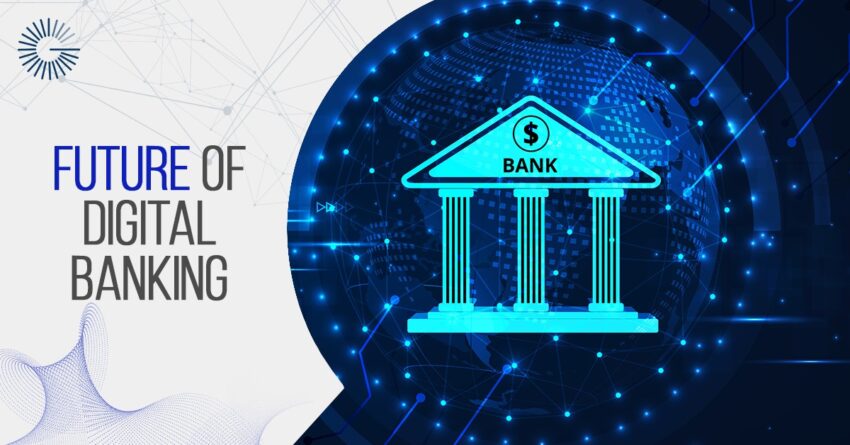The world of financial services has witnessed a profound transformation in recent years, driven largely by the rise of digital banking. The shift from traditional brick-and-mortar banking to digital platforms is not just a passing trend; it represents a fundamental change in how people access, manage, and interact with their finances. As technology continues to evolve, digital banking is rapidly becoming the future of the financial services industry, offering benefits like convenience, accessibility, efficiency, and security that were previously unimaginable.
In this article, we will explore why digital banking is the future of financial services, how it’s reshaping the industry, and what it means for consumers and financial institutions alike.
1. The Rise of Digital Banking
A Shift in Consumer Behavior
The rise of digital banking can largely be attributed to changing consumer preferences. As consumers become increasingly tech-savvy and accustomed to having services at their fingertips, the demand for digital banking services has soared. From checking balances to making payments, transferring funds, and even applying for loans, consumers now expect to manage their financial activities from their smartphones or computers, without the need to visit a physical bank branch.
A report by Accenture revealed that 70% of consumers prefer to conduct banking transactions digitally rather than through traditional methods. This shift is further fueled by the proliferation of smartphones, the internet, and advancements in digital infrastructure that have made online banking services faster and more reliable.
The Impact of COVID-19
The COVID-19 pandemic has also played a significant role in accelerating the adoption of digital banking. With physical banks closing their doors to curb the spread of the virus, customers turned to online platforms for their banking needs. As lockdowns and social distancing measures became the norm, digital banking emerged as a lifeline for millions of customers seeking to manage their finances safely and conveniently from home.
During the pandemic, digital banking experienced a surge in usage across the globe, with increased demand for services such as mobile payments, remote customer support, and digital lending.
2. Convenience and Accessibility
One of the most compelling reasons why digital banking is poised to be the future of financial services is the unparalleled convenience and accessibility it offers. Gone are the days of waiting in long lines at physical branches or adhering to restrictive banking hours.
With digital banking, customers can access their accounts and perform financial transactions at any time and from anywhere. Whether they’re at home, at work, or on vacation, individuals can check balances, transfer money, pay bills, and even apply for loans or mortgages with just a few taps or clicks.
Furthermore, digital banking makes financial services more accessible to underserved populations. People living in rural areas or countries with limited access to traditional banking infrastructure can now use mobile phones and the internet to perform financial transactions, making banking services more inclusive than ever before.
Example:
In many parts of the world, mobile banking services have been a game-changer for individuals in remote areas who previously had limited access to physical banks. Mobile money services like M-Pesa in Kenya have helped millions of people perform essential transactions such as sending money, paying bills, and even receiving salaries without the need for a physical bank account.
3. Cost Efficiency and Lower Fees
For both consumers and financial institutions, digital banking offers significant cost-saving opportunities. For consumers, digital banking typically comes with fewer fees and lower costs than traditional banking services. Many online banks offer free checking accounts, no ATM fees, and lower interest rates on loans, allowing customers to save money.
From the perspective of financial institutions, digital banking eliminates the need for maintaining a vast network of physical branches, which can be expensive to operate and maintain. With digital platforms, banks can reduce overhead costs associated with branch operations, staffing, and infrastructure. These cost savings can then be passed on to customers in the form of lower fees and more competitive interest rates.
Example:
Online banks like Chime and Ally have gained significant popularity by offering fee-free accounts, no minimum balance requirements, and higher interest rates on savings compared to traditional banks. This shift in the banking model demonstrates how digital banking is revolutionizing the cost structure in financial services.
4. Personalization and Tailored Financial Services
Another reason why digital banking is the future of financial services is its ability to provide personalized experiences. With the help of artificial intelligence (AI) and data analytics, digital banks can offer customized financial products and services based on individual customer preferences and behavior.
Digital platforms can analyze a user’s transaction history, spending habits, and financial goals to suggest relevant products, such as tailored savings plans, investment opportunities, or credit offers. This level of personalization was difficult to achieve in traditional banking, where services were often standardized and limited to in-person consultations.
Moreover, digital banks are increasingly leveraging AI-powered chatbots and virtual assistants to provide personalized customer support. These tools can quickly resolve customer inquiries, offer product recommendations, and guide users through complex banking tasks, improving the overall customer experience.
Example:
Neobank Revolut uses AI to offer personalized financial advice, helping users manage their spending, track subscriptions, and even invest in cryptocurrency. This level of personalization makes digital banking more appealing to consumers who want tailored financial services.
5. Enhanced Security and Fraud Prevention
As digital banking grows, so does the need for robust security measures. Fortunately, digital banking platforms have been quick to adopt advanced security technologies, ensuring that customer data and transactions are protected from cyber threats.
Two-factor authentication (2FA), encryption, biometric authentication (like fingerprint and facial recognition), and machine learning algorithms that detect suspicious behavior are just a few of the security measures that digital banks employ to protect their customers. These technologies help mitigate the risks of fraud, identity theft, and unauthorized access, providing customers with peace of mind when managing their finances online.
Furthermore, digital banks often offer real-time alerts and notifications, allowing customers to monitor their accounts for suspicious activity and take immediate action if necessary.
Example:
Digital banks like N26 and Monzo use advanced encryption techniques and biometric authentication to ensure their customers’ information is secure. Additionally, their real-time fraud detection systems send immediate notifications to customers if a potentially fraudulent transaction is detected.
6. The Role of Open Banking
Open banking is another important aspect of the future of digital banking. Open banking refers to the practice of banks and financial institutions sharing customer data with authorized third-party providers through secure application programming interfaces (APIs). This allows customers to access a wider range of financial products and services from various providers, all through a single digital platform.
By promoting collaboration between banks and fintech companies, open banking enhances competition and innovation, ultimately leading to better products and services for consumers. It allows consumers to easily compare and switch between different financial products, such as loans, savings accounts, and insurance policies, ensuring they get the best deal for their needs.
Example:
In the UK and Europe, regulations such as the Revised Payment Services Directive (PSD2) have pushed for greater adoption of open banking. This has enabled innovative fintech companies to develop new services like budget management apps, financial aggregators, and credit scoring tools, all of which can be integrated with a consumer’s digital banking account.
7. Environmental Benefits of Digital Banking
Digital banking also offers significant environmental benefits. Traditional banking requires substantial physical infrastructure, such as branches, paper-based transactions, and extensive travel for customers and staff. These practices contribute to carbon emissions, deforestation, and waste production.
In contrast, digital banking is paperless and reduces the need for physical infrastructure, leading to a smaller environmental footprint. With digital banking services being accessible online, customers can manage their finances from the comfort of their homes, reducing the need for commuting to branches and further decreasing their carbon footprint.
Example:
Many digital banks and fintech companies have made sustainability a core part of their brand identity. For instance, the digital bank Monzo has committed to reducing its environmental impact by offering paperless banking and donating to climate-focused initiatives.
Frequently Asked Questions (FAQs)
1. Is digital banking safe?
Yes, digital banking is safe, as long as you choose a reputable provider. Banks use advanced security measures like encryption, two-factor authentication, and biometric identification to ensure that your data and transactions are secure.
2. Can I access my digital bank account from anywhere?
Yes, digital banking allows you to access your account from anywhere, as long as you have an internet connection. This is one of the major advantages over traditional banking, which requires physical visits to a branch.
3. Are digital banks regulated?
Yes, digital banks are regulated by financial authorities in the countries they operate in. They are subject to the same regulatory standards as traditional banks, ensuring that your money is safe.
4. How do digital banks make money?
Digital banks typically make money through interest on loans, fees for premium services, and partnerships with third-party providers. Many digital banks have lower fees than traditional banks because they don’t need to maintain physical branches.
5. What services do digital banks offer?
Digital banks offer a wide range of services, including checking and savings accounts, personal loans, mortgages, credit cards, investment options, and payment services.
6. Can I get a loan from a digital bank?
Yes, many digital banks offer personal loans, mortgages, and even business loans. The application process is typically quicker and more streamlined than with traditional banks.
7. Will traditional banks be replaced by digital banks?
While digital banking is rapidly growing, traditional banks are unlikely to be entirely replaced. Instead, we are likely to see a hybrid model where both digital and physical banking coexist, with digital platforms becoming the primary method of banking for many consumers.
Conclusion
Digital banking is rapidly emerging as the future of financial services, offering a host of benefits such as convenience, accessibility, personalization, and enhanced security. As technology continues to advance, digital banking will only become more integral to the way we manage our finances. Financial institutions are increasingly investing in digital platforms, and consumers are embracing the flexibility and efficiency they provide.
While traditional banking will likely continue to play a role, digital banking is set to dominate the financial services industry, revolutionizing how we access and interact with our money. The future of banking is digital, and it’s clear that this shift is not just a trend but a profound change that will shape the financial landscape for years to come.
Key Takeaways:
- Digital banking offers unparalleled convenience, allowing customers to manage their finances anytime, anywhere.
- Lower fees, cost efficiency, and the elimination of physical branches make digital banking a more affordable option for both consumers and financial institutions.
- Personalization through AI and data analytics allows digital banks to offer tailored financial services that meet the specific needs of their customers.
- Digital banking provides enhanced security measures, ensuring customer data and transactions are protected from fraud.
- Open banking and environmental benefits further position digital banking as the future of the financial services industry.
In conclusion, digital banking is reshaping the financial services landscape and providing customers with an experience that is more flexible, secure, and efficient than ever before. As technology continues to evolve, digital banking will undoubtedly remain at the forefront of financial innovation.

